About the EP Curriculum
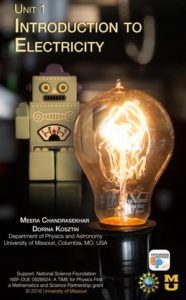 |
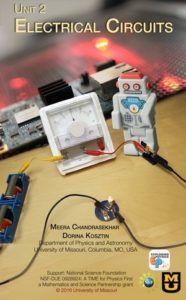 |
 |
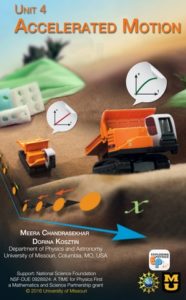 |
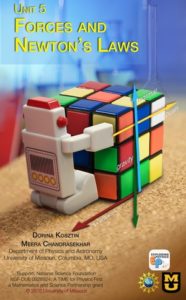 |
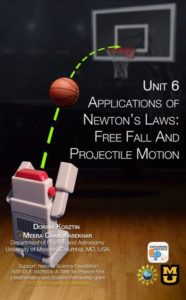 |
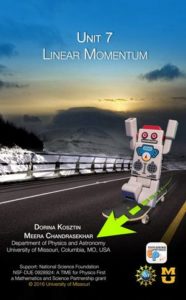 |
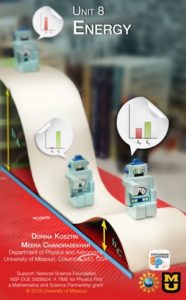 |
The Exploring Physics Curriculum contains 8 Units, and is now available FREE!
Access labs, reading pages, practice problems, and teacher notes for your classroom. Click on the unit titles below to access each unit. For detailed information about each unit, click on the icons above or the More info about… link next to each unit title.
Alignment to Standards: Next Generation Science Standards | Mathematics Common Core Standards
System Requirements: web access on any platform
Unit 1: Introduction to Electricity (unit content) More info about Unit 1 suitable for Middle and High School Courses: Physical Science
Students experience static electricity and develop a model of electrical current using buzzers, motors, bulbs and switches. They use multimeters to measure voltage. Questions answered by this eUnit:
- What happens when objects get charged?
- What does it take to light a bulb?
- What materials conduct electric current?
- Is there a direction in which electric current flows?
- How do a switches, LEDs and photoresistors work?
- What does it take to make a battery?
Buy materials for teaching Unit 1 hands-on labs.
Unit 2: Electrical Circuits (unit content) More info about Unit 2 suitable for High School Courses: Physics First / Physics
Students build and analyze simple circuits, compare and contrast series and parallel circuits, and calculate current, voltage and resistance in a circuit. Questions answered by this eUnit:
- What are the factors that affect the resistance of a resistor?
- How do current and voltage qualitatively predict the brightness of a bulb in a circuit?
- How are voltage, current and resistance related?
- How do you calculate the voltage across a resistor and the current through a resistor in a seriescircuit, and in a parallel circuit?
- How do you calculate the power and the energy expended by a resistor?
Unit 3: Uniform Motion (unit content) More info about Unit 3 suitable for High School Courses: Physical Science / Physics First
Students study uniform motion using bubble tubes, battery cars, and motion detectors. They analyze data using position-time and velocity-time graphs, and describe motion via verbal, pictorial, graphical and mathematical representations. Questions answered by this eUnit:
- How do you define the position, change in position, and distance traveled by an object?
- How do you define and measure speed? How do you calculate average speed?
- How do you pictorially and graphically represent uniform motion?
- How do you mathematically calculate the factors involved in uniform motion?
- How do you predict where the paths of two objects traveling at a constant speed intersect?
Unit 4: Accelerated Motion (unit content) More info about Unit 4 suitable for High School Courses: Physical Science / Physics First
Students design experiments for objects that speed up or slow down using toy cars, ramps, spark timers and technology. They collect data, build position-time graphs, interpret slope, learn about instantaneous velocity and acceleration, and make motion diagrams. Questions answered by this eUnit:
- What does the position-time graph of a car traveling down an incline look like?
- How does one obtain a velocity-time graph from a position-time graph?
- What does the slope of a velocity-time graph represent?
- How do you represent and mathematically calculate the factors involved in accelerated motion?
- How can you predict where two objects, one accelerating and one at constant speed, meet?
Unit 5: Forces and Newton’s Laws (unit content) More info about Unit 5 suitable for High School Courses: Physical Science / Physics First
Students investigate forces through several hands-on activities and labs, develop mathematical relationships between force of gravity and mass, and between the elastic force and the stretch of a spring. They investigate the concept of inertia (Newton’s First Law), develop the relationship between mass and acceleration (Newton’s Second Law) and investigate the nature of action and reaction forces (Newton’s Third Law). Questions answered by this eUnit:
- What is a force, and how can we represent it? How does one draw a force diagram?
- How does normal force act? How are gravitational force and mass related? How does the elastic force in a spring depend on its stretch?
- What is inertia? How are force and acceleration related? When two objects are in contact, how do the forces between them compare to each other?
- What is the connection between force and motion?
Unit 6: Applications of Newton’s Laws (unit content) More info about Unit 6 suitable for High School Courses: Physics First / Physics
Students study motion under gravity: In Sec. 1 they study objects as they fall, and are thrown upward. In Sec. 2, they learn about motion in two-dimensions for an object that is thrown horizontally. In Sec. 3 they qualitatively analyze the motion of an object thrown at an angle. These labs connect concepts in Units 3, 4 and 5. Questions answered by this eUnit:
- How do you describe the motion of an object as it travels upward and downward under the force of gravity (free fall)? Use motion diagrams and position-time, velocity-time and acceleration-time graphs to describe an object in free fall, on Earth and on another planet.
- How do you calculate the factors involved in free fall, and for an object thrown horizontally?
- For an object that is thrown with a horizontal velocity, how do you draw motion diagrams for the horizontal and vertical motion, and how do you graphically represent the motion?
- How do you qualitatively describe the trajectories of an object thrown at an angle?
Unit 7: Linear Momentum (unit content) More info about Unit 7 suitable for High School Courses: Physics First / Physics
Students study elastic and inelastic collisions using hands-on activities and labs to understand linear momentum and impulse. Qualitative and quantitative labs are used to investigate the conservation of linear momentum in elastic and inelastic collisions. Questions answered by this eUnit:
- What is linear momentum?
- How is linear momentum connected to the mass and velocity of an object?
- What is impulse?
- How is impulse connected to linear momentum?
- What is the connection among impulse, forces in a collision and the time of impact?
- What are the different types of collisions?
- What is the difference between elastic and inelastic collisions?
- What stays the same during a collision?
Unit 8: Energy (unit content) More info about Unit 8 suitable for High School Courses: Physical Science / Physics First / Physics
Building on knowledge from previous units, students connect forces and motion to energy. Students design their own experiments to study different types of energy storage, energy transfers and transformations. Questions answered by this eUnit:
- What are some different types of energy storage?
- How can one represent energy transfers and transformations using pie charts and bar graphs?
- How is energy related to work?
- How can we calculate the energy stored in a system?
- How do you mathematically calculate kinetic energy, elastic potential energy and gravitational potential energy?
- How can you use the conservation of energy theorem to find position or velocity of an object?
